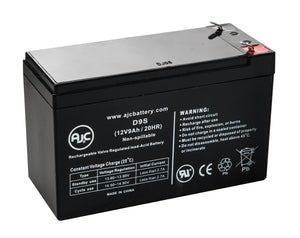Orders over $129

Lithium Ion Replacement Battery Benefits and Maintenance Tips
Lithium Ion (also known as Li-ion) has risen in popularity over recent years especially as we continue to be more and more dependent on our electronic devices from laptops and cell phones to barcodes scanners and multimeters. One key element with li-ion batteries is the need for them to be small and light and low maintenance and these guys certainly fit the bill. So let’s have a look at some of the key features of li-ion batteries.
Maintenance – as stated above, these guys are pretty low maintenance. There’s no need to top up with acid or water, there’s no need to fully discharge periodically and typically does not need to be removed from its device. It really does not require any significant maintenance.
Performance – most devices that run on li-ion batteries, need it to last for a decent amount of time before requiring recharging. Cell phones in particular typically need to last all day but that battery needs to be powerful enough to keep it going. It’s a delicate balance but one the li-ion is very capable of doing given its high energy density.
Discharge – most rechargeable batteries have something known as self-discharge which is essentially a chemical reaction inside the batteries and reduces the overall effectiveness of a battery over time. Li-ion self-discharges at a much lower rate than say a NiMH or NiCd.
Environment – Li-ion batteries are often used in electric vehicles which significantly reduces carbon emission, but they can also be recycled. It is important to note that they need to be handled and broken down safely so not all recycling centers can handle them. Find a location that will accept them and dispose of appropriately.
While Li-ion batteries are low maintenance, there are a few things that will help extend their lifespan.
- Temperature – these batteries love a temperate climate particularly around 68F to 77F or room temperature so extremes on either side can impact its overall lifespan.
- Partial Discharge – The recommendation from most manufacturers is to use only 25% of the battery capacity before recharging.
- Full Discharge – while it’s good to regularly do the partial discharge, they suggest hitting a full discharge every 20 or 30 times.
- Full Capacity – Keeping the battery constantly at full capacity will shorten battery life so make sure to unplug regularly.
- Battery Chargers – typically using the manufacturers charger is recommended but people will often grab a spare or a cheap knockoff causing current fluctuations which will damage the battery.
- Storage – if you’re planning on storing the battery for an extended period of time, discharge to about 50% before storing in a dry, cool environment. Some suggest the refrigerator but if possible, a basement is best.
BatteryClerk carries a large range of replacement Lithium Ion batteries for a wide range of products. Head to our website and search for your product to see if we’ve got what you need.


